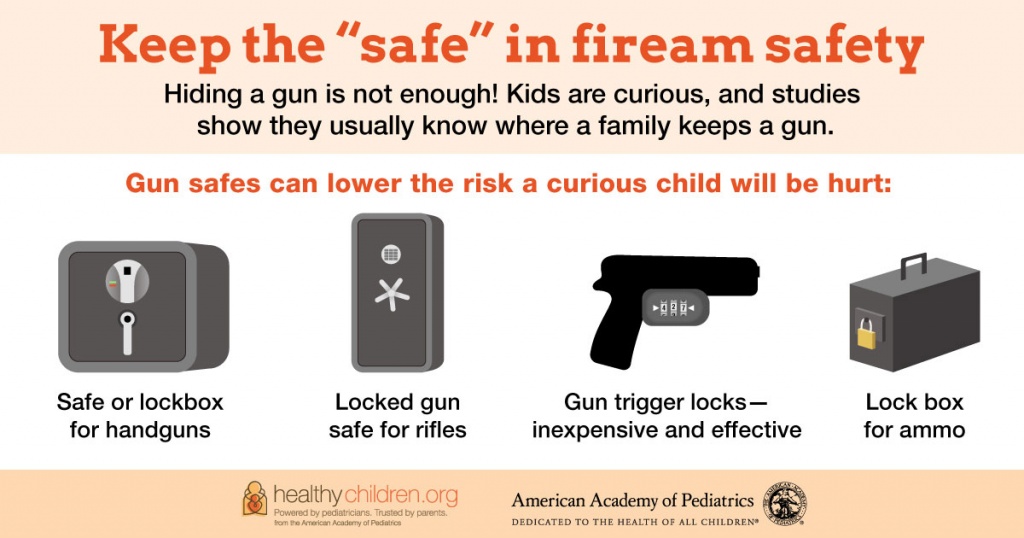 Firearms require respect, careful handling, and thorough gun safety education. However, research shows that more than 5 million American children live in homes with improperly stored guns. The American Academy of Pediatrics defines proper storage as locked and unloaded with the ammunition stored separately. Easy access to unsecured firearms is a factor in most unintentional child gun deaths. Access to a gun is also a risk factor for teenage suicide, which has been steadily rising over the last decade. The U.S. Centers for Disease Control reports that 40 percent of suicides among teens aged 10 to 17 in 2015 involved guns.
Firearms require respect, careful handling, and thorough gun safety education. However, research shows that more than 5 million American children live in homes with improperly stored guns. The American Academy of Pediatrics defines proper storage as locked and unloaded with the ammunition stored separately. Easy access to unsecured firearms is a factor in most unintentional child gun deaths. Access to a gun is also a risk factor for teenage suicide, which has been steadily rising over the last decade. The U.S. Centers for Disease Control reports that 40 percent of suicides among teens aged 10 to 17 in 2015 involved guns.
A recent study in the Journal of Pediatrics showed that an average of 5,790 children age 0-17 in the United States receive emergency room treatment for gun-related injuries each year. The study said that about 21 percent of those injuries are unintentional. Additionally, data from the CDC show that 3,390 children and teens died in 2019 from gun-related injuries, with firearms bypassing motor vehicles as the leading cause of death for children in America. There are evidence-based solutions to prevent these tragedies.
If adults keep guns, or if children are using BB, cap or paintball guns, here’s what families should keep in mind to ensure everyone’s safety:
Store guns and ammunition safely
- Keep guns in a locked location, unloaded, out of reach and sight of children.
- Store ammunition in a separate locked location, out of reach and sight of children.
- Keep the keys and combinations hidden.
- Make sure to equip all guns with effective child-resistant gun locks.
- Lock up gun-cleaning supplies, which are often poisonous. (If you think your child has touched or ingested these supplies, call the Tennessee Poison Center at 1-800-222-1222.)
- When handling or cleaning a gun, never leave the gun unattended.
Talk to children and their caregivers about gun safety
- It is important to remember that talking to children about guns is a respected precaution but is not a guarantee of safety.
- Make sure they understand that any situation where there’s an unsupervised gun is a dangerous situation.
- For young children, keep the language simple. For example: “If you see a gun, don’t touch it. Tell an adult right away.”
- When talking to adolescents about guns, include it in your regular safety conversations about topics like drugs, alcohol and safe driving. Give your teen strategies to remove themselves from a situation where an unsecured gun in present such as “My mom just texted that I need to come home right away.”
- Talk to grandparents and the parents of friends your children visit about safe gun storage practices.
Dispose of guns you do not need.
If you decide that you no longer need to have a gun in your home, dispose of it in a safe way. Consult with law enforcement in your community on how to do so.
BB and non-powder guns are also dangerous.
- Non-powder guns, such as ball-bearing (BB) guns, pellet guns and paintball guns, are not regulated by the government but can cause serious injury and death.
- The U.S. Consumer Product Safety Commission says that children younger than 16 should not use high-velocity BB guns or pellet guns. And these guns should only be used under the supervision of an adult.
- Paintball guns are known to cause traumatic eye injuries, so kids need to wear protective eye gear when handling paintball guns.
- Kids should not put caps for toy guns in their pockets, because these can ignite due to friction and cause burns, not to mention loud noises that can damage hearing.
Keep your home safe and practice these gun safety rules. Educating those you love about firearms can prevent unintentional injuries from happening. For more injury prevention tips click here